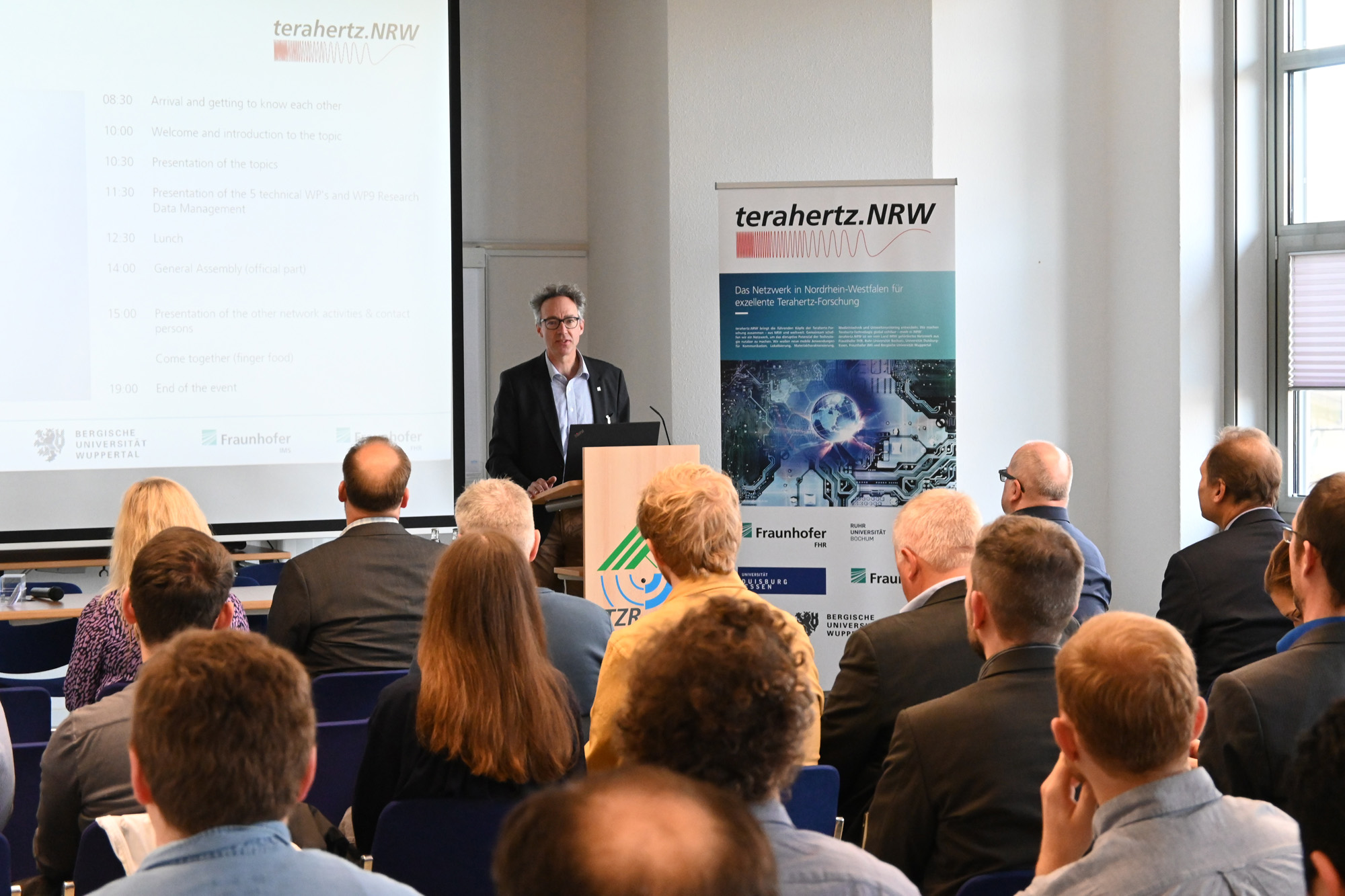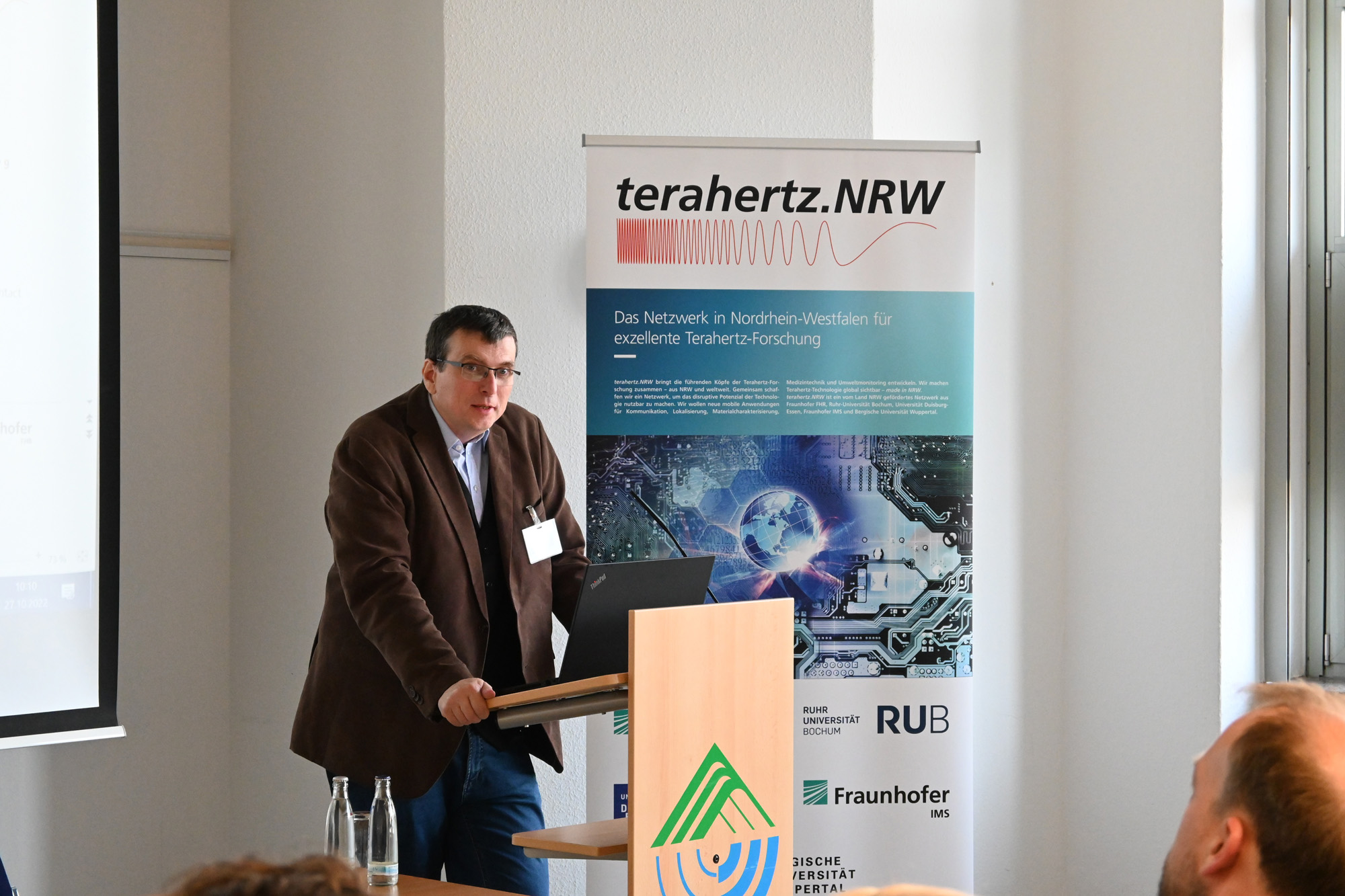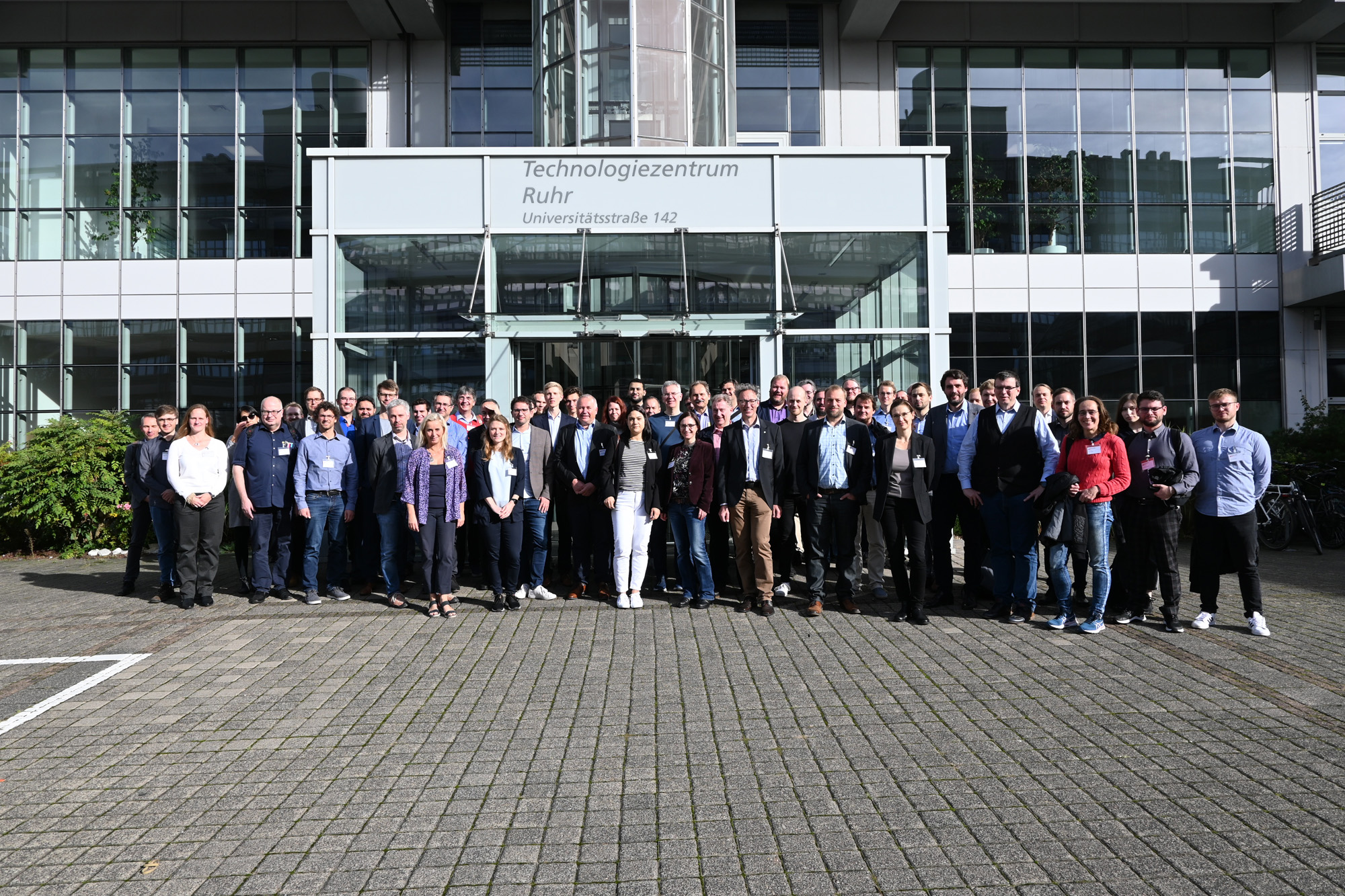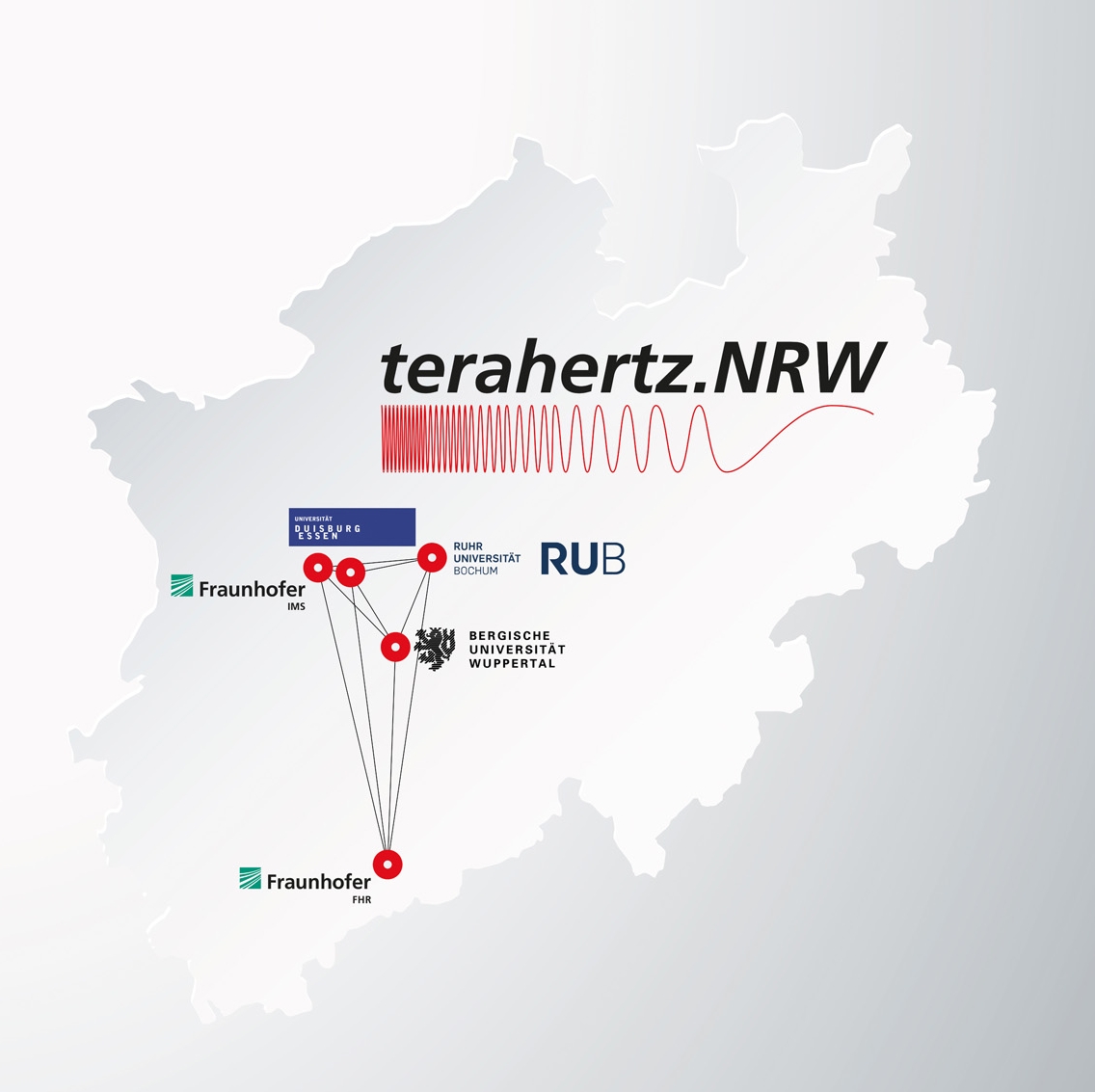Pure networking!



Terahertz radiation offers interesting properties that can be used in numerous specialist areas. The terahertz.NRW network brings together experts from the terahertz field with those from other disciplines.
How do nutrients transport in leaves? How do plants change in their structure, growth and composition when, for example, they are under climatic stress or no longer have sufficient nutrients available? Biologists working on such questions are usually not very well versed in terahertz technology. On the other hand, terahertz experts usually have to pass on questions from the depths of biology. The terahertz.NRW network is therefore now intended to link terahertz research with other disciplines: This will enable scientists from different disciplines to benefit from terahertz technology. And, to stay with the example of biology, together they can look inside plants via terahertz beams.
terahertz.NRW: Funded with 17.7 million euros
The terahertz.NRW project was launched in August 2022, funded by the Ministry of Culture and Science of North Rhine-Westphalia in the »Networks 2021« funding program. The aim of the funding program is to sustainably strengthen and expand existing research networks of universities, universities of applied sciences and non-university research institutions, making them more visible and internationally competitive. The support is designed to run for four years from August 2022. Of the 19 networks that applied, five received funding: terahertz.NRW is the largest network to receive funding in this context, with 17.7 million euros. The three universities involved are Ruhr-Universität Bochum, University of Duisburg-Essen and Bergische Universität Wuppertal with a total of 25 institutes, as well as Fraunhofer FHR and Fraunhofer IMS with a total of six departments. The Fraunhofer FHR is in charge of the project.
In contrast to the usual research funding, terahertz.NRW focuses not only on the research itself, but also on the network. This is reflected, among other things, in the importance of funding programs, for which about 25 percent of the total amount is used. Among other things, the funding takes place in the area of gender: How do you get more women into STEM fields, especially electrical engineering, where the female quota is currently 20 percent? There are also to be scholarships.
Terahertz radiation: What‘s behind it?
The network‘s goal is to help other disciplines benefit from terahertz technology. But what actually is terahertz radiation, and what are its advantages? Terahertz radiation is a frequency range from 100 gigahertz to ten terahertz, i.e. it lies between infrared radiation and microwaves. It is true that such radiation is strongly attenuated by the atmosphere, so it does not have a long range, which is why it is not possible to see very far with it. However, terahertz radiation is one of the few frequency ranges in which large frequency bandwidths are still available, and the radiation is also physically quite interesting. For example, terahertz radiation can be used to find absorption lines of gases and solids. Radio astronomers have always been interested in this frequency range, since much of the cosmic background radiation is located here. On Earth, applications in the terahertz range are extremely interesting, where bandwidth or material characterization is not the issue, but rather long range. One example is the transmission of data from a computer to a monitor, which is done today via cable. However, with increasing resolution, the cable reaches its limits, in which case terahertz waves could be used - the high attenuation due to the atmosphere is irrelevant because of the short distances, whereas the large bandwidth is quite attractive.
In which areas does terahertz radiation offer added value?
All other applications of terahertz radiation also relate to the short range: be it in medical technology, environmental monitoring, material characterization, communication or localization. As far as medicine is concerned, non-invasive terahertz sensor technologies could help classify tissues, for example during surgery, and look inside the body with endoscopes to analyze and remove cancer. In the area of materials characterization, the focus is on high-precision terahertz imaging systems and materials and structural imaging in three dimensions. The biology department can benefit from real-time observation of the transport rates of nutrients under different environmental conditions - such as differences between day and night, and plant responses to soil amendments or stress.
